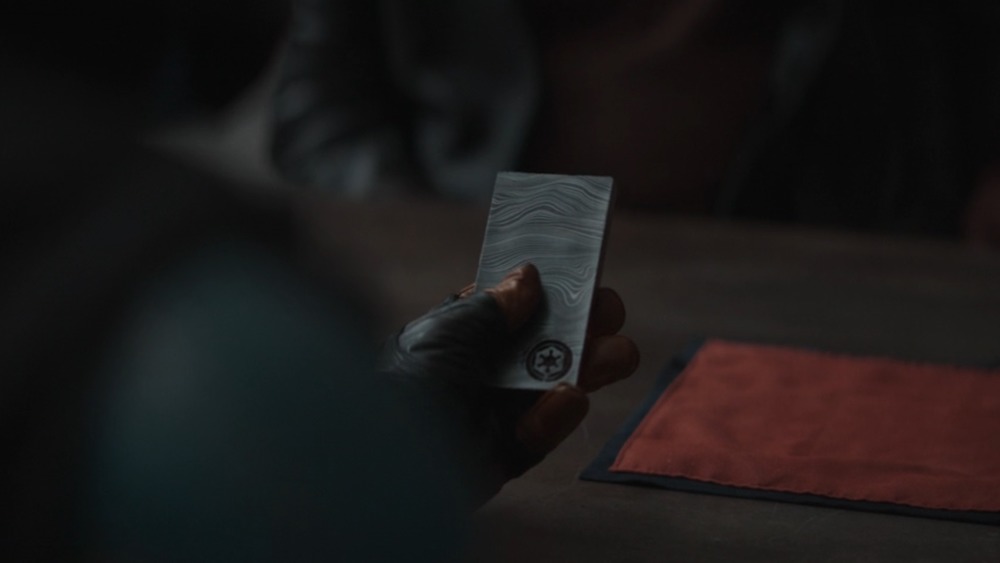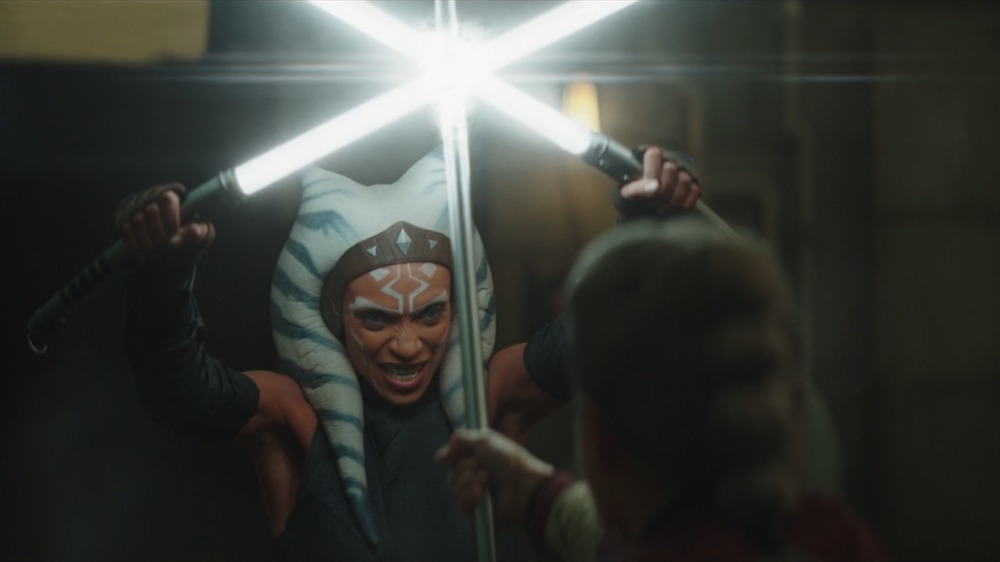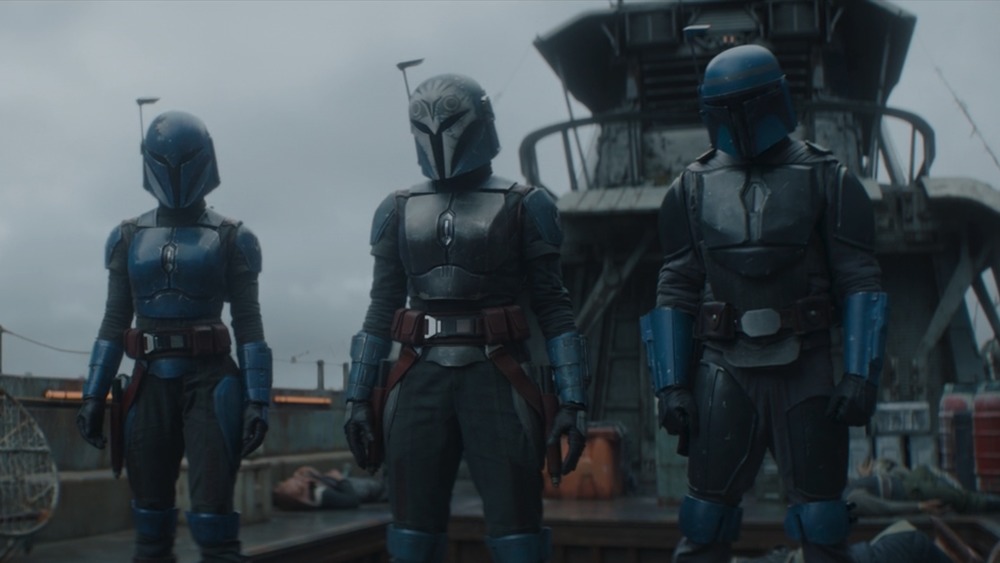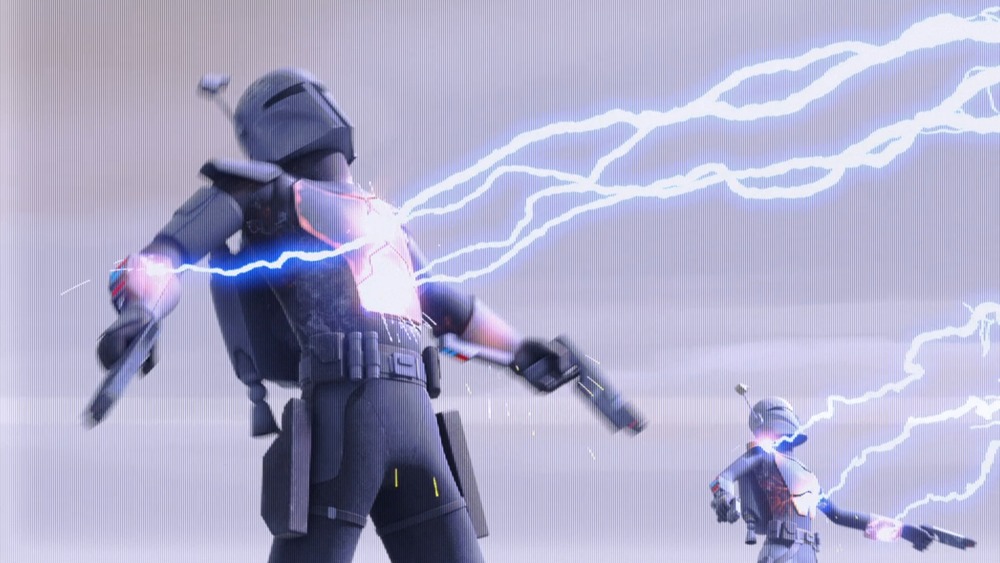Star Wars: The Untold Truth Of Beskar
Nothing symbolizes Star Wars more than lightsabers. As the unique weapons of the Jedi, they're iconic in both their sound and design. But while it's immensely satisfying watching them slice easily through endless droids, every story needs conflict, and so even the lightsaber must have a counter.
Enter: Beskar.
The highly valuable metal alloy beskar has been at the center of The Mandalorian ever since episode 1. The titular bounty hunter (Pedro Pascal) is paid with it in the form of Imperial-stamped ingots for delivering the Child. He then takes it to the Armorer of his clan, who melts it down and molds it into new armor for him. He gathers enough to make a full, shiny set of armor that instantly makes him a target and yet deflects nearly every attack directed toward him.
However, it's not until the recent episode, "Chapter 13: The Jedi," that the true potential of beskar is truly shown — in the form of a long, thin spear wielded by the oppressive magistrate (Diana Lee Inosanto). She uses it to battle Ahsoka Tano (Rosario Dawson), who wields two shining white lightsabers. Eventually, Ahsoka disarms the magistrate, defeating her. She gives the spear to Mando, who very nearly refuses it out of an unwillingness to accept payment for an uncompleted job, until Ahsoka points out that it belongs with a Mandalorian. It seems highly likely that this spear will become important in the near future (perhaps in a battle against Moff Gideon's Darksaber?).
However, if you're still confused about the hype over beskar, here's a rundown of the unique metal.
Beskar is incredibly durable and long lasting
According to the Star Wars Wookiepedia, beskar is an alloy, meaning that it's not a naturally occurring metal but is instead forged with two or more components, similar to steel. The most notable thing about beskar is its incredible durability. It can easily withstand blaster shots, unlike Stormtrooper armor. It's apparently resistant to krayt dragon venom, as Mando was able to survive being in the legendary creature's mouth. However, most special of all, is its resistance to lightsabers, which are known for slicing through nearly anything. As we saw in the fight between Ahsoka and the magistrate, the latter was able to hold her own against the Jedi with her beskar spear, until she was disarmed.
On top of beskar's amazing resistance to damage, the metal alloy is light and malleable enough to be shaped into armor and worn regularly. It lasts an incredibly long time, as well: the Mandalorian Sabine Wren (Tiya Sircar) reveals in the Star Wars Rebels series that her armor is hundreds of years old.
Beskar is exceedingly rare
As we've learned on The Mandalorian, beskar is incredibly rare. It originated with the Mandalorian people, presumably because they are the only ones who know how to make it and have heavily guarded that secret. But its rarity is also a consequence of the Great Purge. During the Empire's reign, they invaded Mandalore and killed most of the planet's people. Afterward, they plundered the beskar from the remains and stamped it with the Imperial seal, marking it as a form of currency. It's not entirely clear how it dispersed from there, but it's now used as payment for bounties and is seen as highly valuable by a variety of people across the galaxy.
Additionally, as Bo-Katan Kryze (Katee Sackhoff) says in The Mandalorian, weapons are being bought and sold on the black market port planet Trask with the plunders of Mandalore. The vague "plunders" probably means beskar.
But the question remains: Why can't the scattered Mandalorians make more beskar? It seems likely that the base components can only be found on the planet Mandalore, which Bo-Katan is trying to retake control of. Alternatively, perhaps only certain people knew how to make it, and they were killed in the Great Purge.
Beskar holds immense cultural significance within Mandalorian culture
Mandalorians feel a sense of ownership over beskar. It is something that was taken from them, that is incredibly important to their culture, just like the style of armor they wear. While there are differences between the clans, like how the Children of the Watch refuse to take their helmets off in front of anyone, the armor itself is universal. It stems from their warrior history, or as Din Djarin says, "Weapons are part of my religion."
In fact, their signature armor, fighting style, and weaponry comes from when the Mandalorians were warring against the Jedi. They needed to counter both lightsabers and the Force, so they innovated and created a cultural tradition in the process. In "Chapter 11: The Heiress" of The Mandalorian, Bo-Katan Kryze (Katee Sackhoff) says her armor has been in her family for three generations.
As Star Wars: The Clone Wars reveals, this warrior culture actually caused conflict within the Mandalorian people, leading to a split between those who wanted a more peace-focused society, and the traditionalists. Still, despite the divide, the signature beskar armor is important to both sides.
What can harm beskar?
If blasters, lightsabers, and krayt dragon acid can't harm beskar, then what can? Well, there is at least one counter to it: the Arc Pulse Generator. As seen on Star Wars Rebels, Sabine Wren created this weapon when she was a student at the Imperial Academy on Mandalore. Wren designed it to specifically hurt other Mandalorians, as it targets beskar, superheats it, and disintegrates the person under the armor. However, once she realized it was being used against her people, she sabotaged it and destroyed its plans.
It was rebuilt, though in a less-effective capacity, but Wren eventually destroyed it entirely. With The Mandalorian starring Din Djarin in fully decked out beskar armor, and now a beskar spear to boot, the show may need to introduce a new weakness for beskar — but perhaps the threat of the Darksaber sliding between his armor plates will be enough to raise the stakes.




